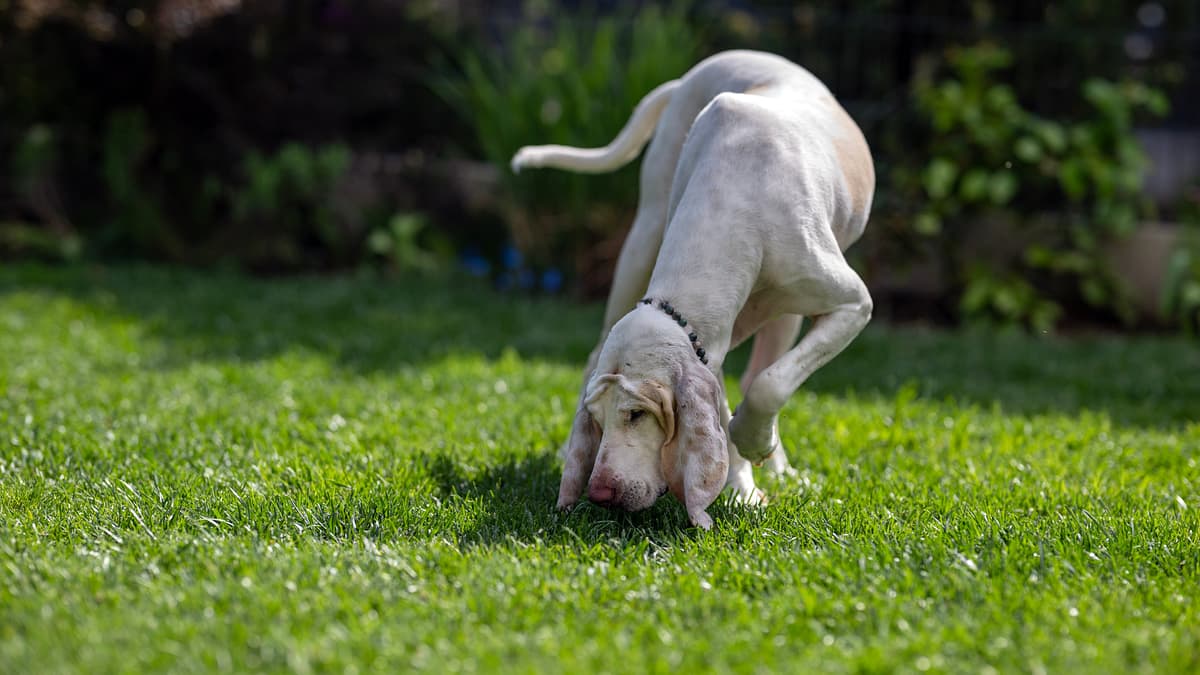Porcelaine vs English Bulldog
Discover the differences between Porcelaine and English Bulldog to make the best choice for your situation.
Try different breeds

Porcelaine
Elegant and lively, this breed is known for its porcelain-white coat and keen hunting instincts. Gentle at home, the Porcelaine thrives as an affectionate and loyal companion.

English Bulldog
Stocky, courageous, and affectionate, this breed charms with its wrinkled face and calm nature. Loyal and gentle, it thrives as a loving family companion.
Quick comparison
Medium
25–28 kg
Short, fine
12–13 years
23–26 kg
High energy
Medium
23–25 kg
Short, smooth
8–10 years
18–23 kg
Low activity needs
Personality & behavior
Compare the personality traits and behavioral characteristics of both breeds.
Porcelaine
Gentle and friendly with people and dogs
Learns steadily but not highly independent
High stamina, active throughout the day
Enjoys interactive games and activities
Adjusts fairly well to new environments
English Bulldog
Affectionate and gentle with family and children
Learns basic commands with some patience
Prefers lounging over vigorous physical activity
Enjoys play but tires fairly quickly
Adjusts well to most living environments
Care needs
Exercise, grooming, and daily care requirements
Porcelaine
Ear infections, hip dysplasia
English Bulldog
Brachycephalic syndrome, skin fold infections
Suitability
How well each breed fits different living situations and families
Porcelaine
Challenging for beginners
Sensitive and energetic, they need experienced handling and consistent training
Needs more space
Porcelaines are active and vocal, requiring more room than most apartments provide
Excellent match
Their high energy suits owners who enjoy outdoor activities and regular exercise
Generally suitable
Friendly and tolerant, but supervision is advised due to their size and exuberance
Usually compatible
Social with other dogs but may chase smaller pets due to hunting instincts
Not recommended
They are prone to separation anxiety and may become destructive if left alone long
English Bulldog
Good option
Easygoing, low-maintenance nature suits owners with limited dog experience
Excellent fit
Moderate exercise needs and calm demeanor work well in small living spaces
Not ideal
Low stamina and breathing issues make them unsuited for high-activity lifestyles
Very suitable
Gentle, patient, and tolerant with young children when properly socialized
Usually compatible
Generally sociable but may need guidance with other pets, especially dogs
Not recommended
They struggle with long periods alone and are prone to separation anxiety
Breed strengths
What each breed excels at and their best qualities
Porcelaine
- Friendly with children and other dogs
- Strong scent-tracking ability for hunting
- Loyal and affectionate with family members
- Athletic and enjoys outdoor activities
- Generally healthy with few breed-specific issues
English Bulldog
- Affectionate with family members
- Generally good with children
- Low exercise requirements
- Minimal grooming needs
- Adaptable to apartment living
Challenges & considerations
Potential challenges and considerations for each breed
Porcelaine
- High exercise needs require daily activity
- Prone to separation anxiety if left alone
- Can be stubborn during training sessions
- May bark excessively when bored or unstimulated
- Sensitive to harsh training or correction
English Bulldog
- Prone to respiratory problems
- High risk of overheating
- Susceptible to skin infections
- Can be stubborn during training
- Tends to drool frequently
Ready to choose your perfect breed?
Learn more about each breed or compare other breeds to find the perfect match for your lifestyle.
Discover more helpful tools
Make use of our other free tools to get the most out of your pet experience
